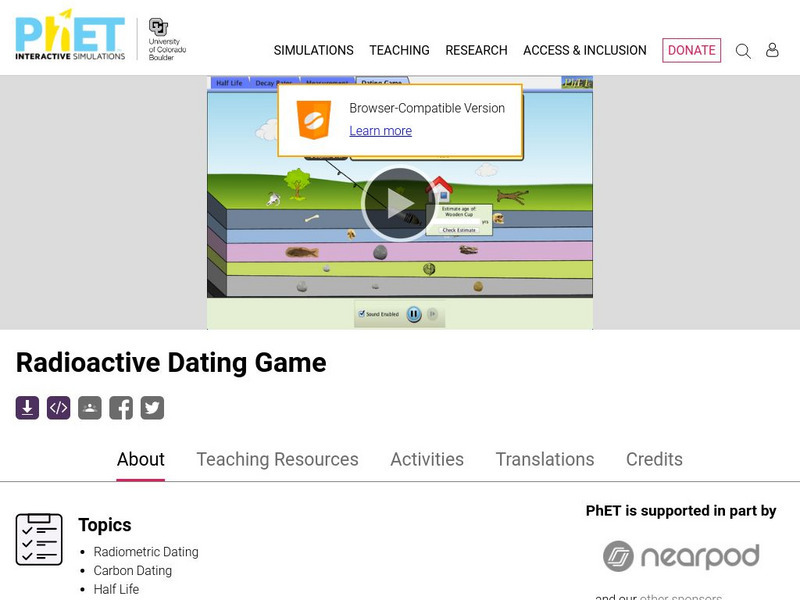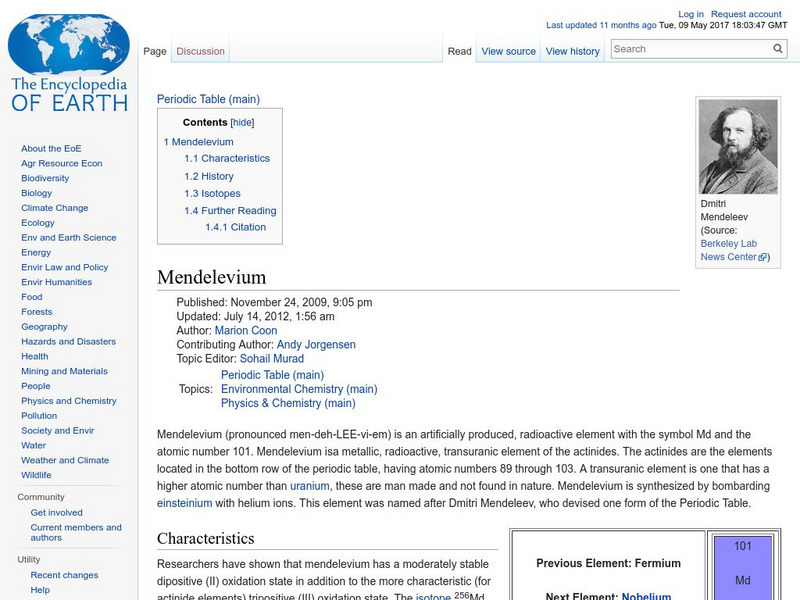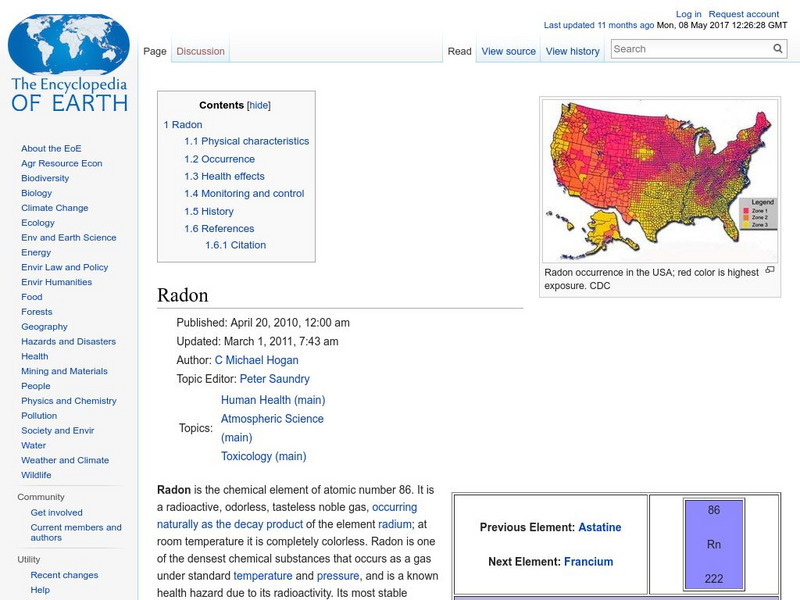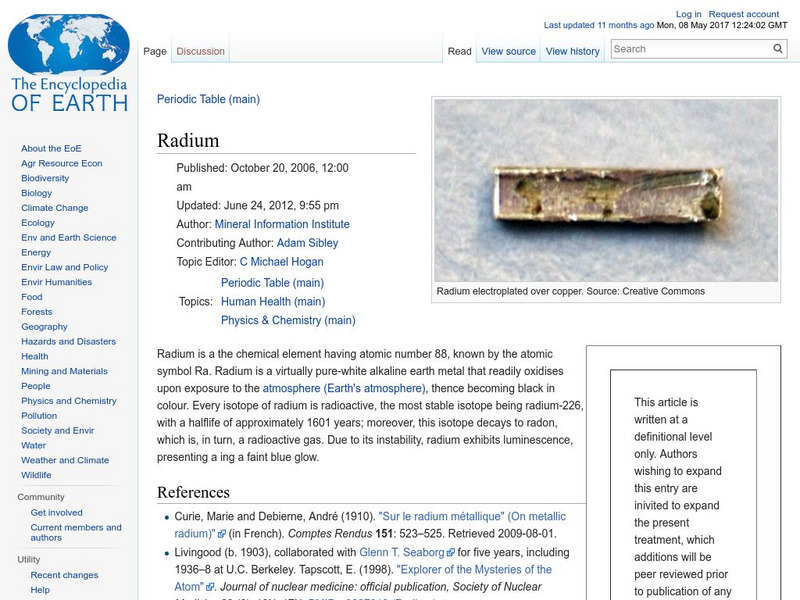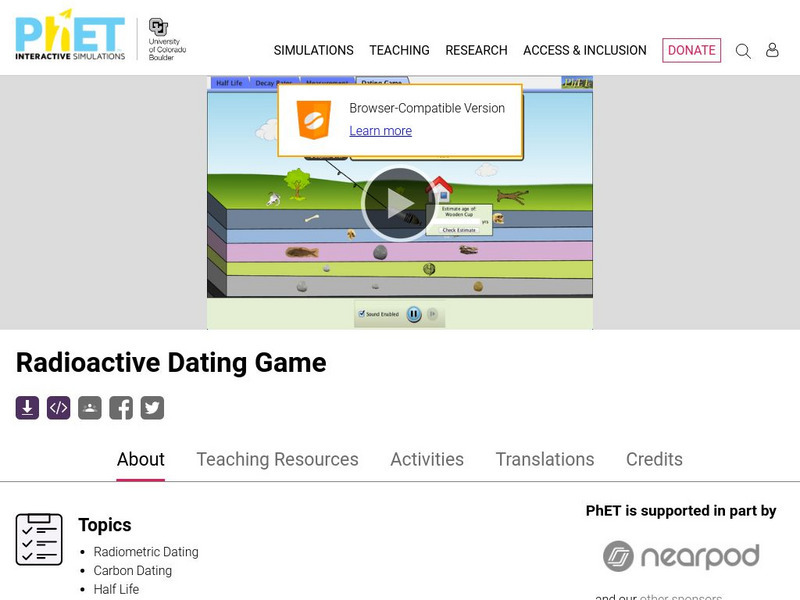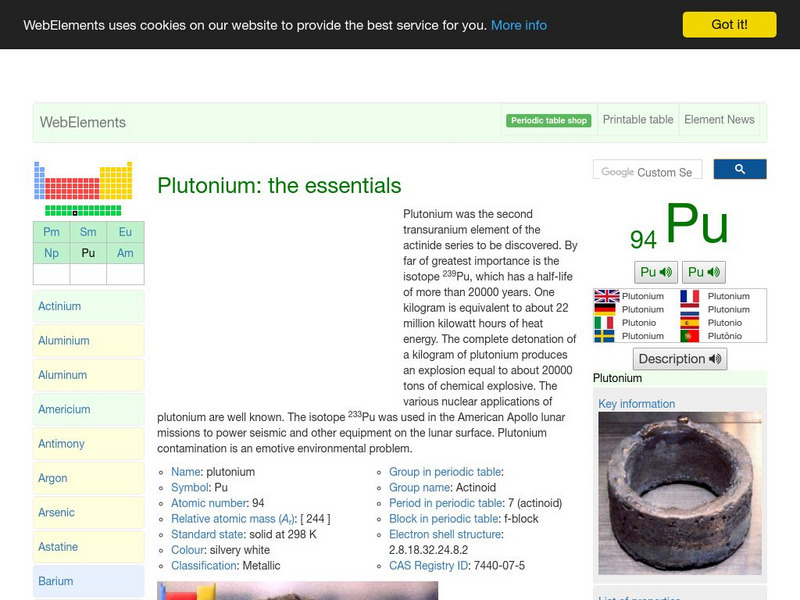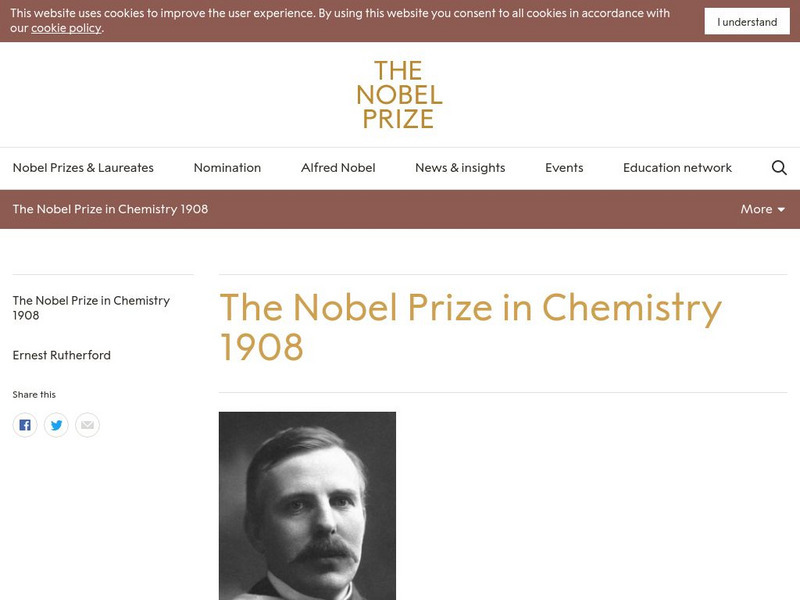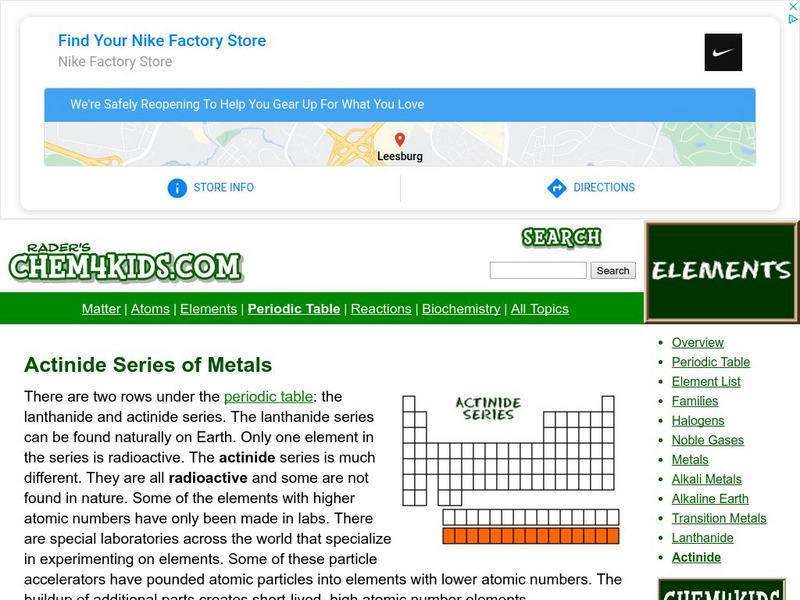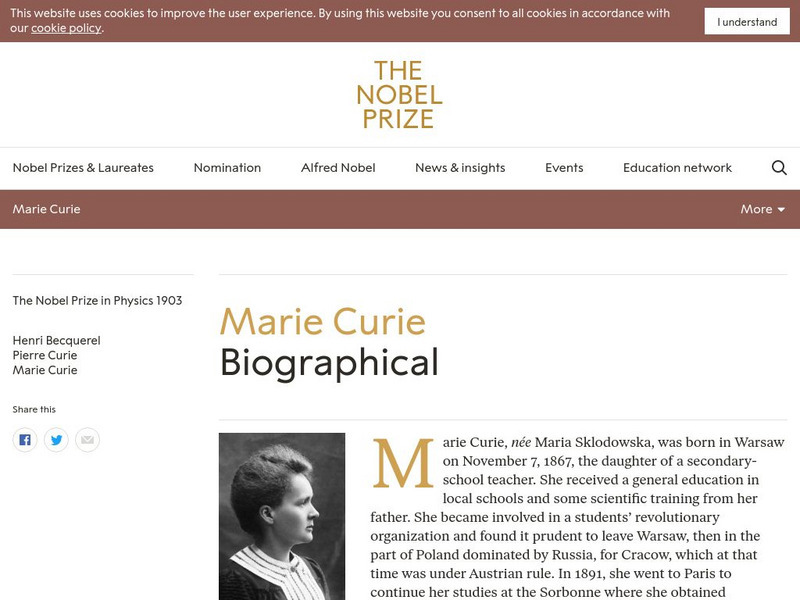Hi, what do you want to do?
University of Colorado
University of Colorado: Ph Et Interactive Simulations: Radioactive Dating Game
Learn about different types of radiometric dating, such as carbon dating. Understand how decay and half life work to enable radiometric dating. Play a game that tests your ability to match the percentage of the dating element that...
Other
Le Moyne College:elements & Atoms, Indivisible No Longer
Click to read different historical documents in chemistry related to the history of the study and discovery of radioactivity.
Encyclopedia of Earth
Encyclopedia of Earth: Mendelevium
Information about the synthetic, radioactive element, Mendelevium, atomic number 101. Covers its discovery, physical and atomic properties, and details about permissible exposure.
Encyclopedia of Earth
Encyclopedia of Earth: Uranium
Information about the radioactive element, Uranium, atomic number 92. Describes its history, physical and atomic properties, how abundant it is on the Earth, and permissible exposure limits. Also discusses sources, uses, isotopes,...
Encyclopedia of Earth
Encyclopedia of Earth: Radon
Information about the radioactive element, Radon, atomic number 86. Covers physical properties, atomic properties, how abundant it is on the Earth, details about its impact on human health, and about how it can be monitored.
Encyclopedia of Earth
Encyclopedia of Earth: Radium
Information about the radioactive element, Radium, atomic number 88. Covers physical and atomic properties, how abundant it is on the Earth, and permissible exposure limits.
Other
Finding Dulcinea: Marie Curie
Article on Marie Curie, who won two Nobel Prizes in Physics and Chemistry for her discoveries in radioactivity and radioactive elements.
University of Colorado
University of Colorado: Ph Et Interactive Simulations: Radioactive Dating Game
Learn about different types of radiometric dating, such as carbon dating. Understand how decay and half-life work to enable radiometric dating. Play a game that tests your ability to match the percentage of the dating element that...
CK-12 Foundation
Ck 12: Physical Science: Radioactive Decay
[Free Registration/Login may be required to access all resource tools.] What radioactive decay is and the three different types. How it changes one element to another and its dangers.
Science and Mathematics Initiative for Learning Enhancement (SMILE)
Smile: Radioactive Decay:half Life
An experiment that will help students in determining the half-life of a radioactive element.
Web Elements
Web Elements Periodic Table: Plutonium
This WebElements site provides a great deal of elemental information. There are audio files demonstrating the correct pronunciation of the element name, pictures showing the electron shells, and information on isotopes, properties and more.
Other
Chemical Elements: Plutonium
A nice, clear site, containing a good deal of elemental information, including; atomic weight, density, boiling point, isotopes and more. An image shows the electron energy levels for the element.
Chem4kids
Chem4 Kids: Atoms: Neutrons
Students will find an explanation of the neutron particle located inside the atom's nucleus. Website also defines isotopes and the process of radioactive decay.
Lawrence Berkeley National Laboratory
Berkeley Lab: Seaborgium
Article summarizing the naming of this element.
Ducksters
Ducksters: Chemistry for Kids: Radioactivity and Radiation
Kids learn about the science of radioactivity and radiation in chemistry including radioactive decay, types, measurements, half-life, and the dangers.
Nobel Media AB
The Nobel Prize: The Nobel Prize in Chemistry 1908
At this site read about Ernest Rutherford (1871-1937 CE), the scientist who was awarded the Nobel Prize in Chemistry, "for his investigations into the disintegration of the elements, and the chemistry of radioactive substances." This...
Lawrence Berkeley National Laboratory
Berkeley Lab: Neutron Activation Analysis
A simple explanation of neutron activation of some natural elements in order to create a radioactive nucleus.
Royal Society of Chemistry
Visual Elements: Berkelium
Nice summary of the basic facts known about berkelium. Easy to follow.
Utah Education Network
Uen: Radioactive Review
This lesson consists of half-life problems for the students to work out.
Chem4kids
Chem4 Kids: Actinide Series of Metals
Take a look at the actinide series comprised of all radioactive elements on the periodic table.
TED Talks
Ted: Ted Ed: Technetium: Periodic Table of Videos
The team at periodicvideos has created a TED-Ed Lesson for every element of the periodic table. This one is about technetium. It is the first naturally radioactive element on the periodic table. [1:11]
Science Struck
Science Struck: Half Life in Nuclear Chemistry
Explains what is meant by the half-life of a radioactive element and how it is calculated.
CK-12 Foundation
Ck 12: Physical Science: Radioisotopes
[Free Registration/Login may be required to access all resource tools.] What a radioisotope is and why they have unstable nuclei. Elements in which all of the isotopes are radioactive.
Nobel Media AB
The Nobel Prize: Marie Curie Biographical
This site from the Nobel eMuseum from the Nobel Foundation provides information for you to read about the life and scientific discoveries of Marie Curie (1867-1934 CE), whose work with radioactivity earned her two Nobel Prizes.





